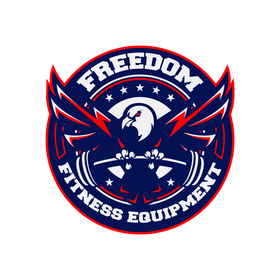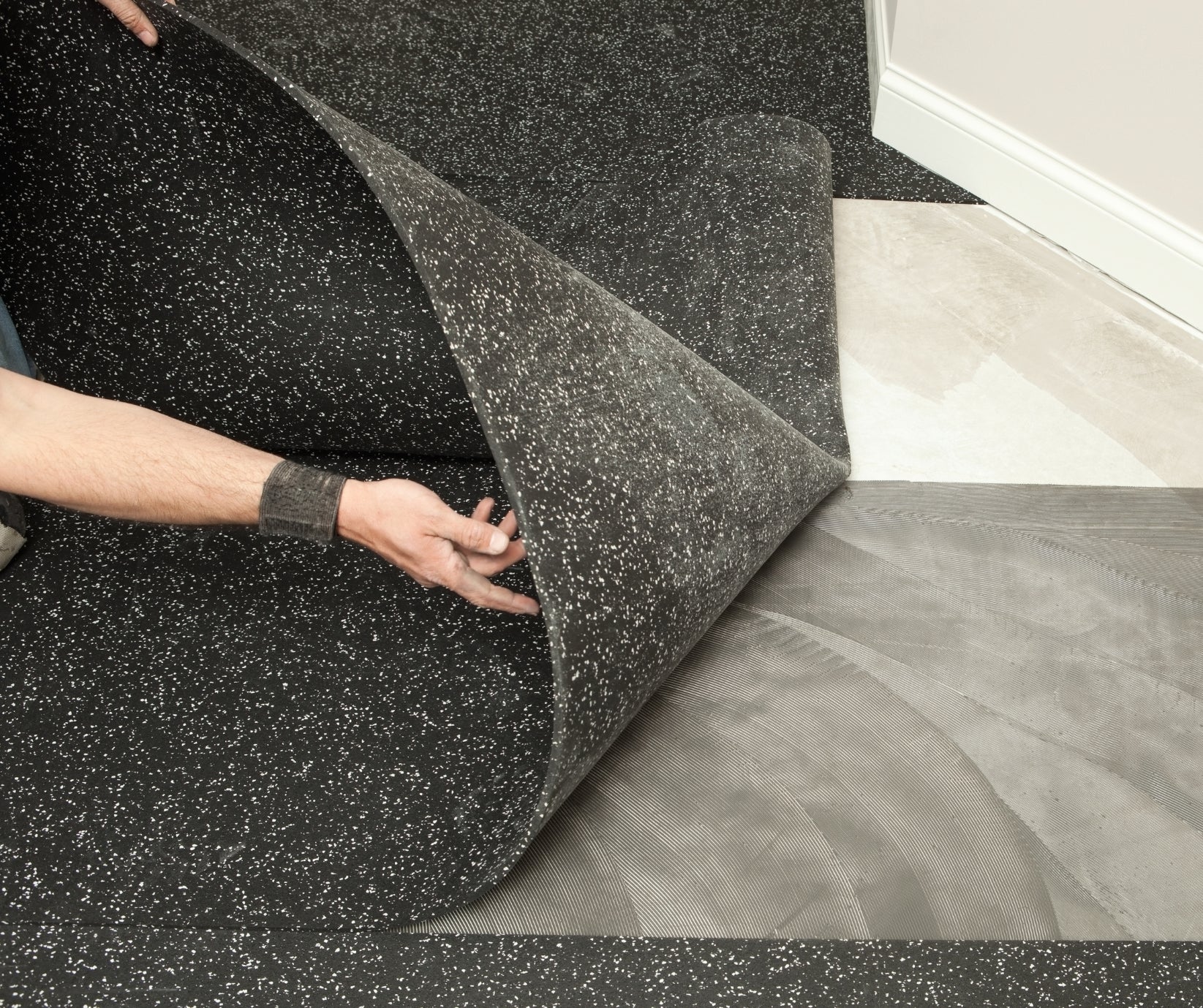Creating a safe and functional gym space involves careful consideration of various factors, and one crucial factor is the flooring! When it comes to gym flooring, rolled rubber flooring stands out as a popular choice due to its durability, versatility, and ability to protect the gym floors. Whether you're setting up a commercial fitness center or a home gym, rolled rubber flooring can provide numerous benefits for athletes, weightlifters, and fitness enthusiasts alike.
In this comprehensive guide, we'll explore the applications of rolled rubber flooring, the advantages and disadvantages of rubber flooring, discuss affordable alternatives, address the potential importance of a vapor barrier, and guide you through the process of actually rolling rubber flooring. By the end of this article, you'll have a solid understanding of what to look for when purchasing rolled rubber flooring for your gym.
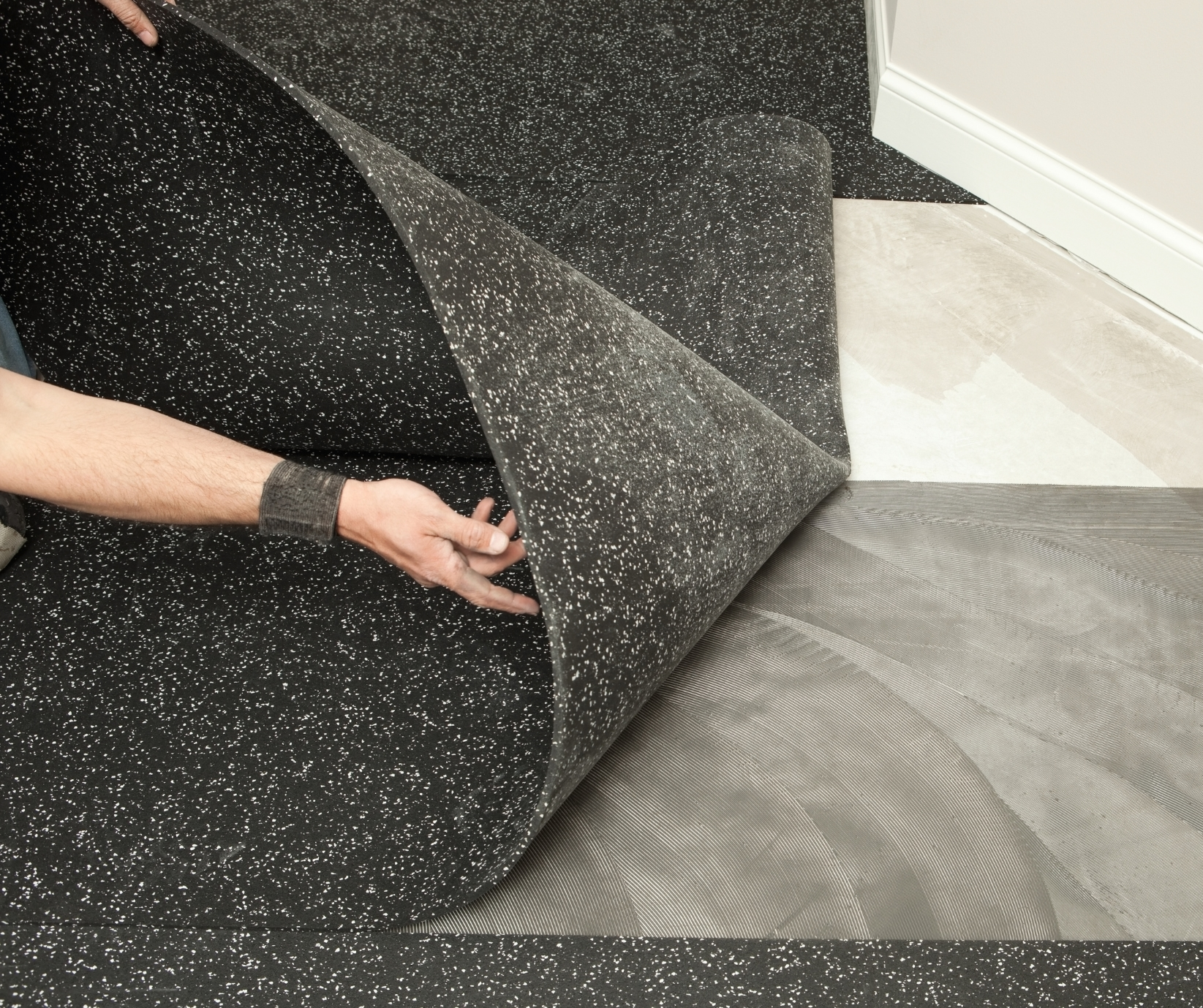
Applications of Rolled Rubber Flooring in Athletic Settings
Rolled rubber flooring is highly versatile and finds extensive use in various athletic settings, ranging from small home gyms to large commercial fitness facilities. Let's explore the different applications of rolled rubber flooring in athletic environments:
-
Gyms and Fitness Centers: In traditional gyms and fitness centers, rolled rubber flooring is a popular choice due to its exceptional durability and resilience. It can withstand heavy foot traffic, constant movement of exercise equipment, and intense workouts. The shock-absorbing properties of rubber flooring help reduce the impact on joints, making it ideal for activities like weightlifting, cardio exercises, and functional training. Additionally, the non-slip surface of rubber flooring ensures a safe workout environment.
-
Training Facilities and Sports Complexes: Training facilities and sports complexes often require flooring that can withstand rigorous training sessions and high-impact activities. Rolled rubber flooring provides the necessary shock absorption, stability, and traction required for athletes to perform at their best. Whether it's strength and conditioning areas, sprint tracks, or multipurpose training zones, rubber flooring offers an ideal surface for agility drills, plyometrics, and athletic movements.
-
CrossFit Boxes and Functional Training Areas: CrossFit boxes and functional training areas particularly focus on dynamic workouts that involve a combination of strength, cardiovascular endurance, and functional movements. Rolled rubber flooring's resilience and slip-resistant properties make it a top choice for these intense training environments. It can withstand the dropping of heavy weights, provide a stable surface for dynamic exercises, and reduce the risk of injury during high-intensity workouts.
-
Health Clubs and Wellness Centers: Health clubs and wellness centers often cater to a diverse range of fitness activities and classes. Rolled rubber flooring can be used in group exercise studios, yoga or Pilates rooms, and cycling studios, providing a comfortable and supportive surface for various activities. Its sound-dampening properties help create a quieter and more enjoyable workout environment.
-
Commercial Gym Facilities: Large commercial gym facilities, including chains and franchises, require durable and low-maintenance flooring options. Rolled rubber flooring meets these requirements while offering a professional and sleek appearance. It can be customized with logos and designs to reflect the gym's brand identity. The versatility of rubber flooring allows for seamless integration in different areas, including weightlifting zones, cardio areas, stretching spaces, and functional training sections.
Remember, when choosing rolled rubber flooring for athletic applications, consider factors such as thickness, texture, and shock absorption to ensure the flooring meets the specific needs of the activities performed in each area of your facility. Additionally, consult with flooring specialists to understand the installation process and maintenance requirements.
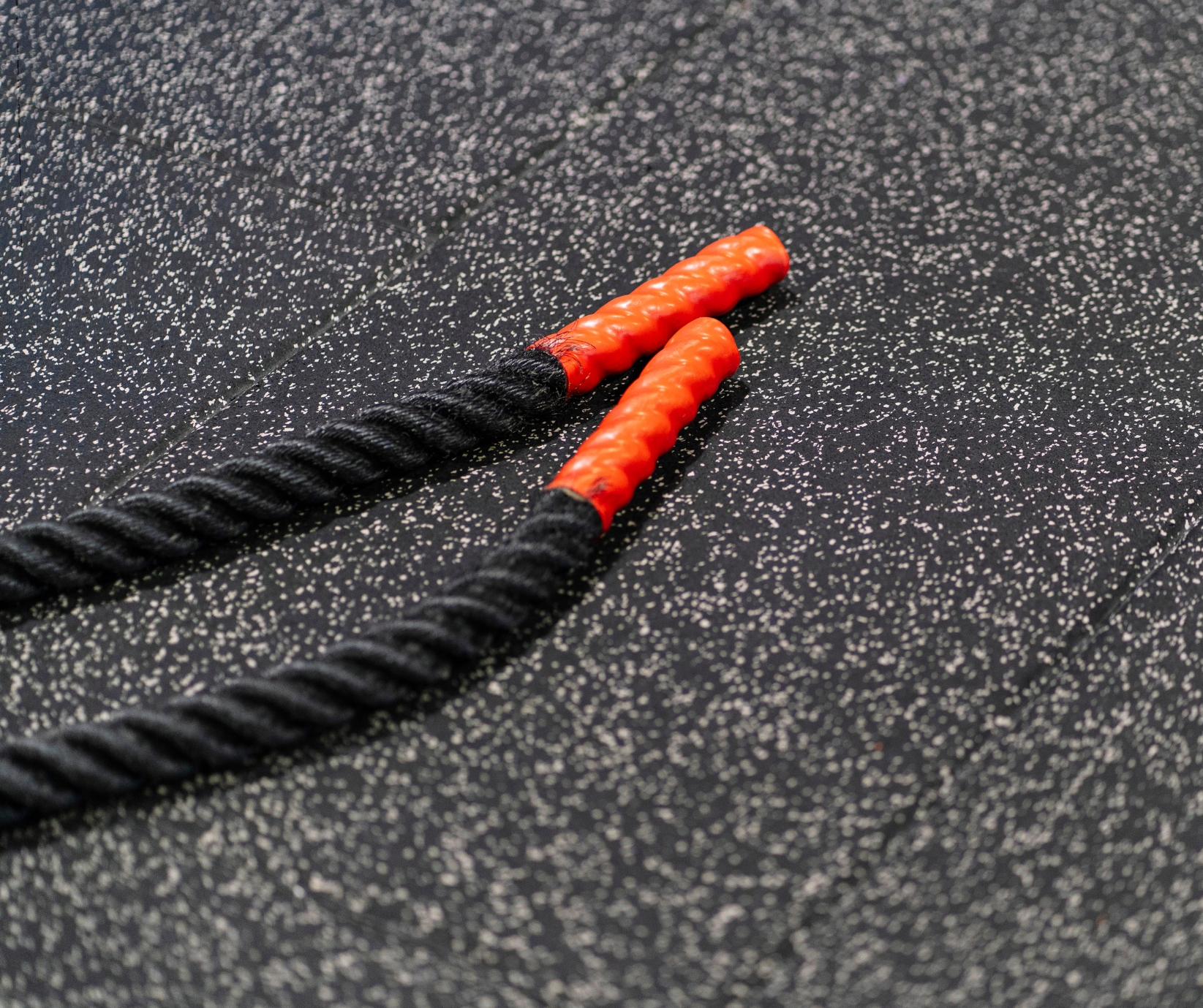
The Advantages of Rolled Rubber Flooring
Rolled rubber flooring offers several key advantages that make it an ideal choice for gym environments. Here are some notable benefits:
-
Durability and Resilience: Rolled rubber flooring is highly durable, designed to withstand heavy foot traffic, exercise equipment, and dropped weights. It provides shock absorption, reducing the impact on joints and minimizing the risk of injury during workouts.
-
Versatility: Rolled rubber flooring is suitable for a wide range of activities, including weightlifting, cardio exercises, functional training, and more. It offers a stable and supportive surface, enabling smooth movements and enhancing overall performance.
-
Easy Maintenance: Keeping your gym clean and hygienic is essential, and rolled rubber flooring simplifies maintenance. Its non-porous surface makes it resistant to moisture, spills, and stains, allowing for easy cleaning with regular sweeping and occasional mopping.
-
Noise Reduction: Gym environments can be noisy, especially during high-impact activities like deadlifting or dumbbell drops. Rolled rubber flooring helps to absorb sound, minimizing noise and creating a more pleasant workout atmosphere for both users and neighboring spaces.
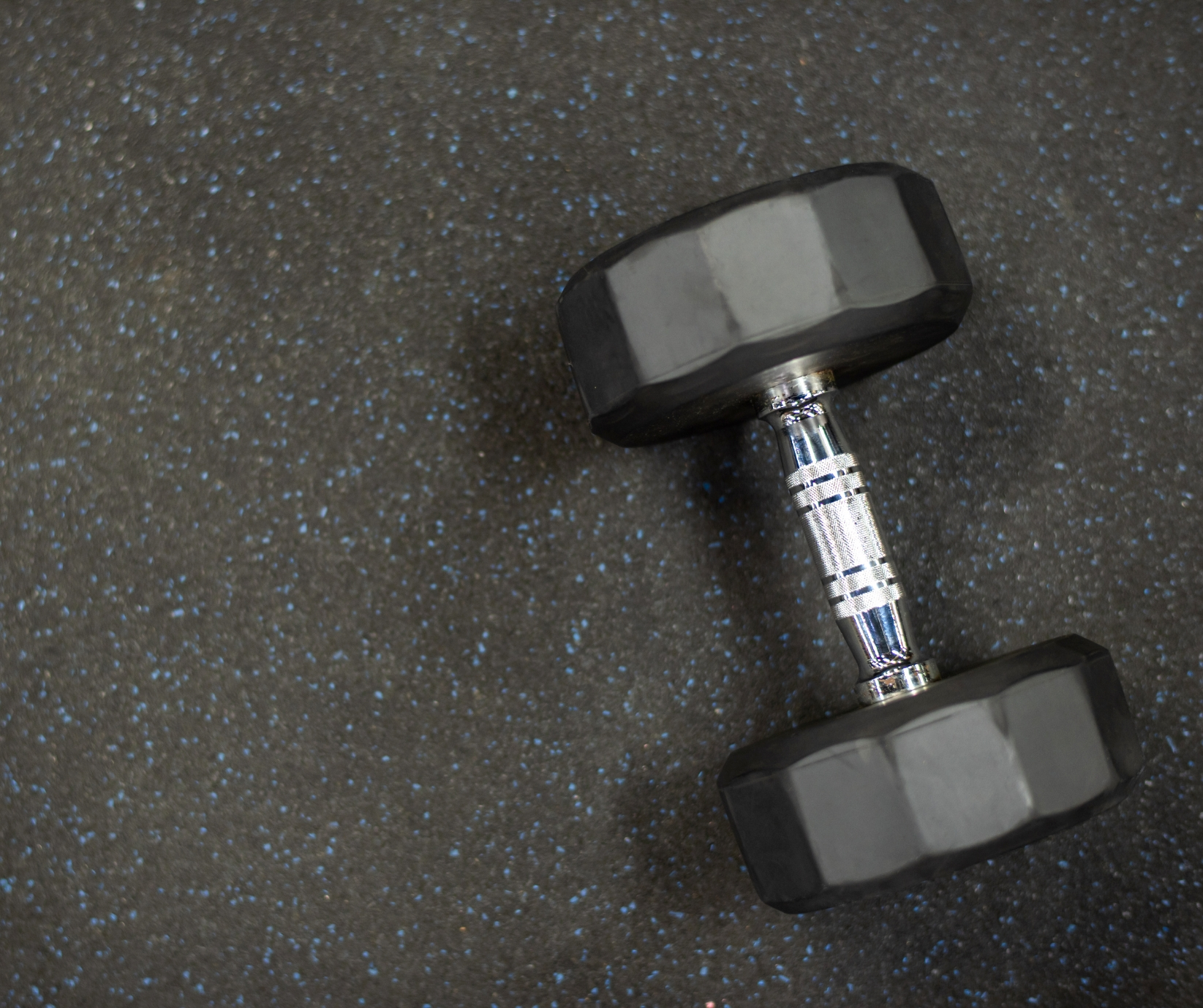
The Disadvantages of Rolled Rubber Flooring
While rolled rubber flooring offers numerous advantages, it's important to consider its potential drawbacks. Here are some disadvantages to be aware of:
-
Initial Odor: Some low-quality new rubber flooring may emit a noticeable odor due to the manufacturing process. However, this odor tends to dissipate over time with proper ventilation and regular use of the gym space.
-
Vulnerability to Sharp Objects: Although highly durable, rolled rubber flooring can be susceptible to punctures or cuts from sharp objects such as heavy-duty exercise equipment with sharp edges. Taking precautionary measures, such as not dropping heavy exercise equipment on the mats, or creating deadlift areas for heavy lifting, and using proper lifting techniques, can minimize this risk.
-
Limited Aesthetic Options: Rolled rubber flooring is primarily designed for functionality rather than aesthetics. It can come in limited color and design choices compared to other flooring options. Consider the color options when building your gym. The focus on functionality makes it a preferred choice for many gym owners and fitness professionals, but research color palettes from the manufacturers first.
Now that we've explored the advantages and disadvantages of rolled rubber flooring, let's move on to discussing the thickness of the flooring that you may need for different training facilities.
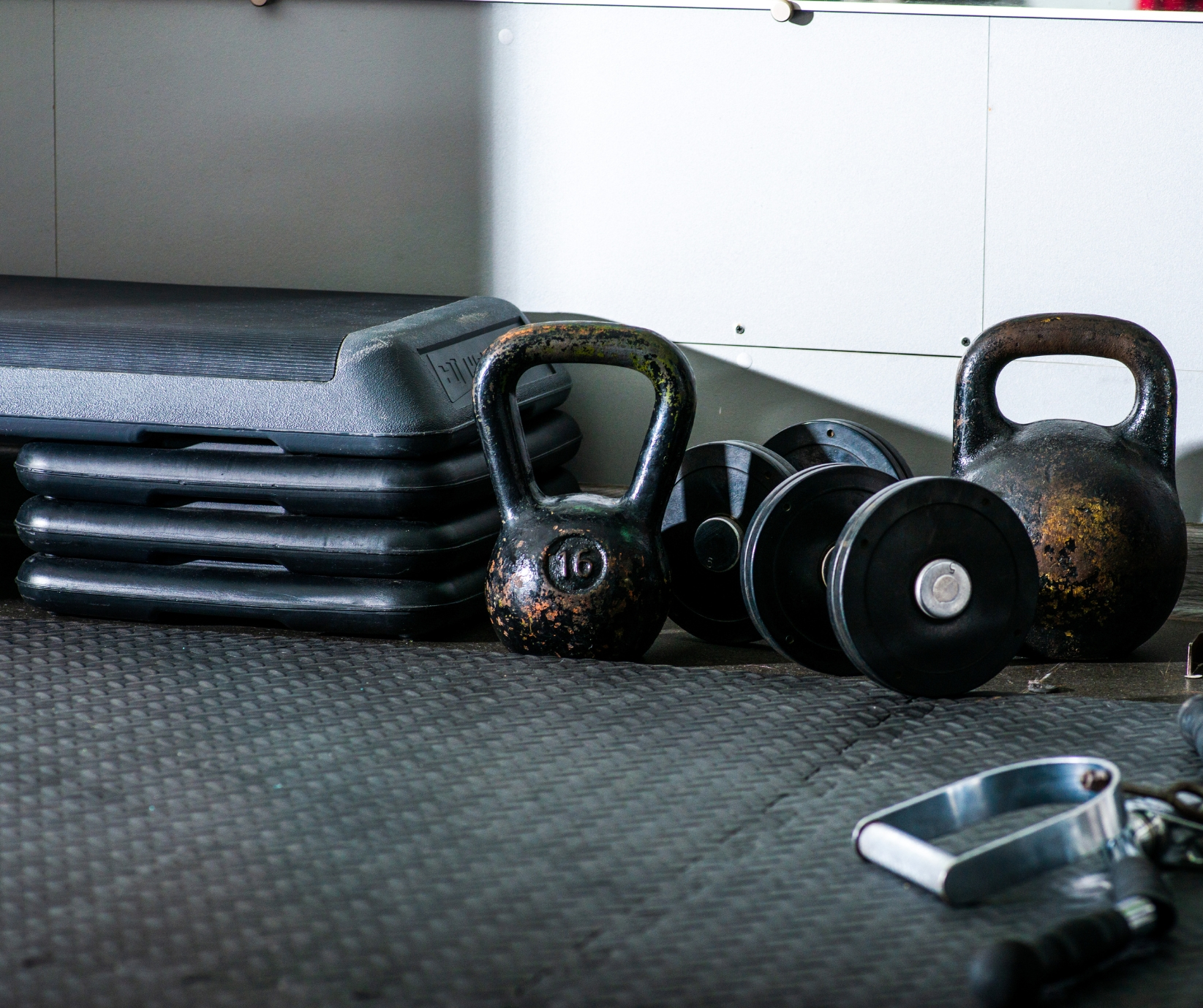
Choosing the Right Thickness of Rolled Rubber Flooring
When it comes to selecting rolled rubber flooring, one important consideration is the thickness of the flooring. The appropriate thickness will depend on the specific application, whether it's an athletic training facility, commercial gym, or personal training studio. Let's explore the recommended thickness for each scenario:
-
Athletic Training Facility: In athletic training facilities where high-impact activities and intense workouts take place, a thicker rubber flooring is generally recommended. A thickness of 8mm to 10mm (approximately 5/16" to 3/8") is commonly used to provide ample shock absorption and protect the subfloor from heavy weights and equipment. This thickness offers excellent durability, stability, and resilience to withstand the demands of athletic training sessions.
-
Commercial Gym: For large-scale commercial gyms that accommodate a wide range of fitness activities and equipment, a thickness of 6mm to 8mm (approximately 1/4" to 5/16") is often suitable. This thickness provides sufficient cushioning for cardio exercises, weightlifting, and general workouts. It offers a balance between shock absorption and stability, ensuring a comfortable and supportive surface for gym-goers.
-
Personal Training Studio: In a personal training studio or smaller gym setting, where the focus is on one-on-one or small group training sessions, a thickness of 4mm to 6mm (approximately 5/32" to 1/4") is typically sufficient. This thinner option still provides adequate shock absorption and durability while maintaining a sleek and professional appearance. It is suitable for activities that involve moderate impact and lighter equipment.
It's important to note that these thickness recommendations are general guidelines, and specific requirements may vary based on factors such as the type of activities, equipment used, and user preferences. Additionally, it's crucial to consider the condition of the subfloor and any additional padding or underlayment that may be used in conjunction with the rubber flooring.
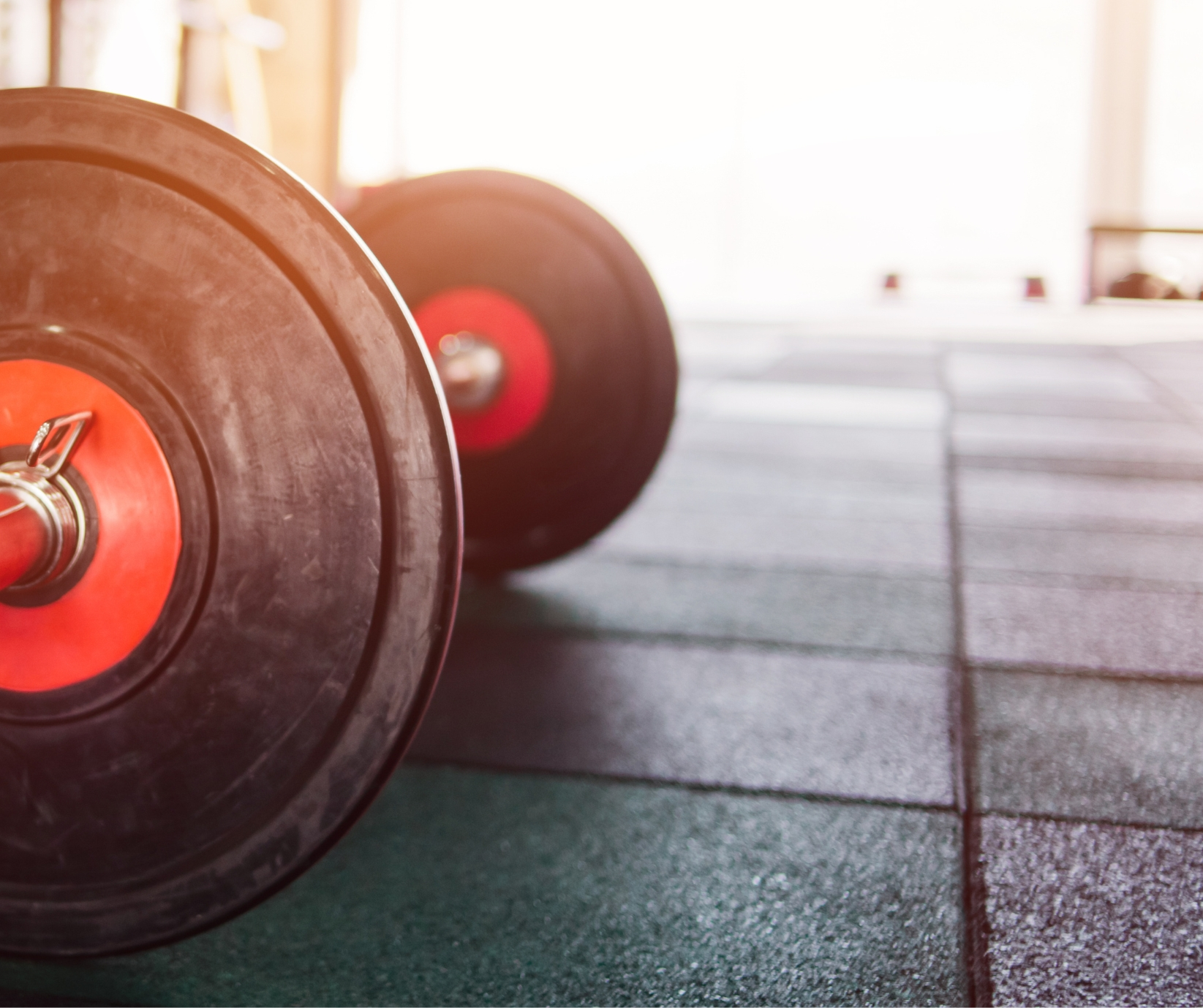
The Potential Importance of a Vapor Barrier
When installing rubber flooring, it's important to consider if there is a need for a vapor barrier. A vapor barrier acts as a protective layer between the subfloor and the rubber flooring, preventing moisture and vapor transmission. Here's why it's important and when you should use it:
-
Moisture Protection: Moisture can seep through the subfloor, leading to potential issues such as mold, mildew, and flooring damage. A vapor barrier creates a barrier that prevents moisture from reaching the rubber flooring, ensuring its longevity and performance. This is particularly important in basements where the subfloor is prone to water and vapor seepage.
-
Subfloor Preservation: Certain subfloor materials, such as wood or basement concrete, can be vulnerable to moisture. Installing a vapor barrier helps preserve the integrity of the subfloor, reducing the risk of warping, rotting, or deterioration over time.
-
Health and Hygiene: Moisture buildup can create an environment conducive to the growth of mold and bacteria, which can compromise air quality and contribute to health issues. A vapor barrier helps maintain a clean and hygienic gym space, promoting the well-being of gym users.
Consult with flooring experts or professionals to determine the specific vapor barrier requirements for your gym based on factors such as subfloor material, moisture levels, and installation guidelines. Taking the necessary precautions during installation will ensure the long-term performance and durability of your rubber flooring.
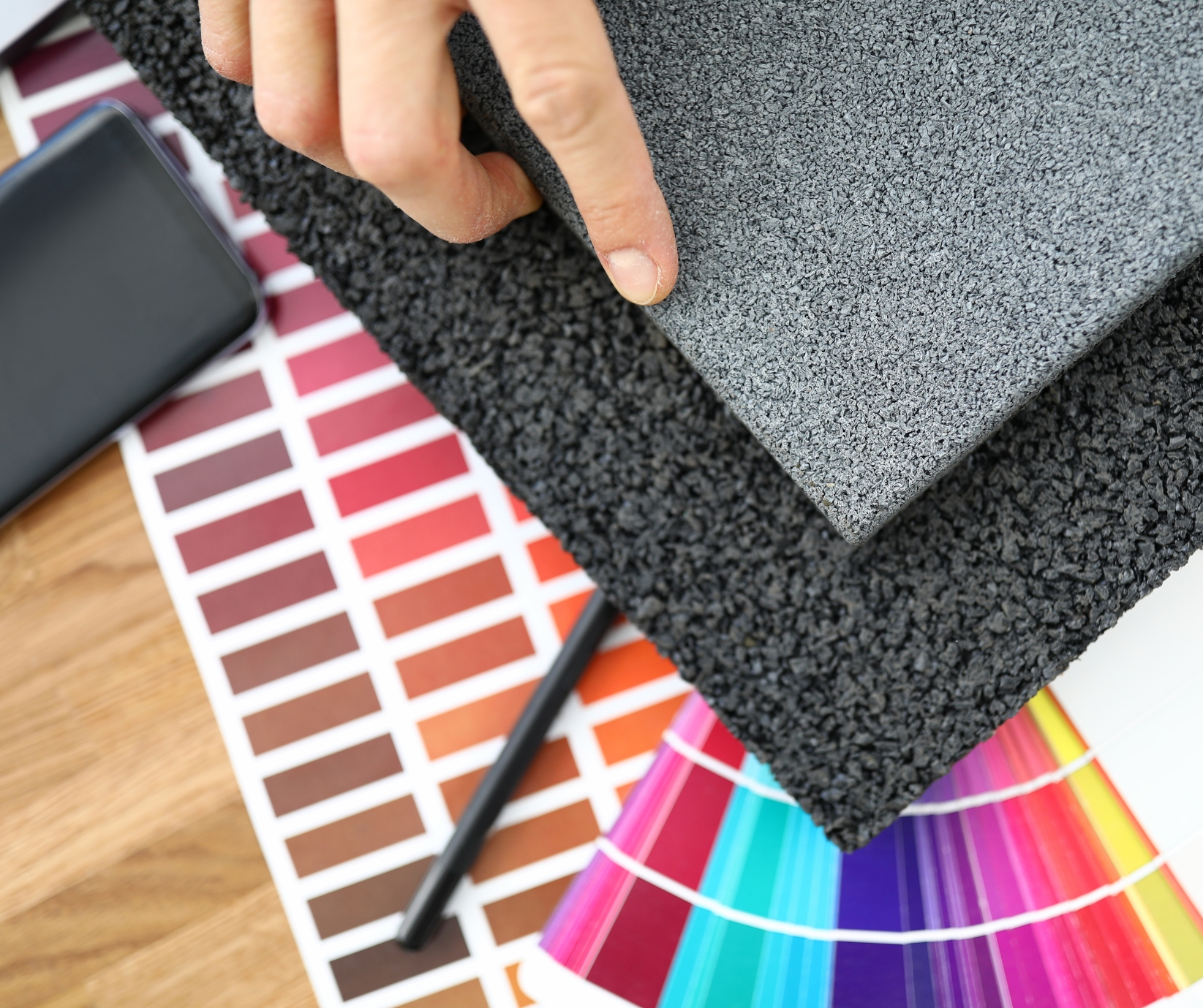
Affordable Alternatives to Rolled Rubber Flooring
While rolled rubber flooring is a popular choice, it may not always fit everyone's budget. Fortunately, there are affordable alternatives to consider when selecting flooring for your gym. Here are a few options:
-
Interlocking Foam Tiles: Interlocking foam tiles offer a cost-effective solution for gym flooring. These tiles are lightweight, easy to install, and provide excellent cushioning for low-impact activities and floor exercises. They come in various thicknesses and colors, allowing you to create a customized look for your gym.
-
Vinyl Flooring: Vinyl flooring is another affordable alternative that offers durability and a wide range of design options. It is resistant to moisture, easy to clean, and provides a smooth and comfortable surface for workouts. Vinyl flooring is available in various styles, including wood, stone, and tile patterns, allowing you to achieve the desired aesthetic for your gym.
-
Carpet Tiles: Carpet tiles are a budget-friendly option that provides comfort and noise reduction. These tiles are easy to install, allowing for quick replacements in case of wear or damage. Carpet tiles come in a variety of colors and patterns, offering versatility in design. While not suitable for heavy weights or high-impact exercises, they can be an excellent choice for cardio areas or designated workout zones.
By selecting rolled rubber flooring for your athletic setting, you can provide a high-performance surface that promotes safety, enhances performance, and withstands the demands of various athletic activities. Whether it's a small home gym or a commercial fitness facility, rolled rubber flooring is a versatile and reliable choice for creating an optimal workout environment.
Consider your specific needs, the type of exercises performed, and the level of traffic in your gym when selecting an affordable alternative to rolled rubber flooring. Each option has its own advantages and limitations, so choose the one that best suits your budget and functional requirements.
Specific Needs for Specific Sports
Certain sports in the weight lifting category require different flooring needs. Powerlifting and Olympic lifting, for example, while sharing a few things in common, are very different sports. And while CrossFit may at times incorporate elements of strongman, the sports as a whole share as many differences as commonalities.
So how do the needs of these sports affect the flooring needs of your gym space? Well, this depends on which one you choose to participate in, if any.
If you own a CrossFit gym, the answer is pretty simple. However, if you are flooring your home gym and have had 15 different hobbies in the last 4 years, you may want the option to try each of the four sports. Luckily for you, there are options that can allow that.
But first, let’s jump into each sport and what requirements the sport puts on specific flooring needs.
Strongman

These men and women are insane, in a good way of course. Strongman events vary but typically involve a lot of odd objects when training. Things like Atlas stones, heavy carries, yokes, and even airplanes.
While there is of course practice using the implements from competition as a part of training, a large portion of training is often spent doing simple exercises really well. Exercises like squats, presses, and deadlifts. These types of exercises are great at building strength and that strength translates to competition well.
Now if you are looking at rolled rubber flooring for strongman-style training, you are going to want a minimum of ¾ inch thick flooring. This thickness will allow you to drop weights if needed - whether that be a heavy carry, a deadlift that isn’t in complete control on the way down, or, hopefully, this never happens, a failed squat.
Strongmen often lift heavy weights so heavy-duty flooring is needed. This will not only protect your flooring underneath, but also give lifters a strong, stable footing, and create a safe environment to train hard.
CrossFit

CrossFitters go hard. You never know what the training will be for the day, so your flooring has to be ready for anything.
CrossFit gyms typically have heavy barbells, lots of sweat, and a lot of foot traffic. This is certainly a recipe for some high-quality, thick floors.
For CrossFit gyms or even a home gym looking to perform CrossFit programming, ¾ inch or 1 inch thick flooring is best. The biggest reason for the extra thickness when compared to strongman is that CrossFit involves a lot of barbell dropping. Whether it is bouncing deadlifts or dropping jerks or snatches, it is very common to see lots of barbells being dropped during a class. For this reason, it is critical to get a thick enough rubber floor (¾ or 1 inch). This thickness will help absorb the force and protect your flooring underneath.
Another thing to consider with CrossFit is that there are almost no weight machines, this means almost the entire gym floor is heavily foot-trafficked. Needless to say, you’re going to want a thick rubber floor if you plan on doing any CrossFit in your gym.
Olympic Weightlifting

If you want to join a sport where you know exactly what to expect, Olympic weight lifting is for you. While it is simple, it is not easy. Olympic weight lifting involves two lifts - the snatch and the clean and jerk.
Similar to the points made in the CrossFit section, you are certainly going to want a minimum of ¾ inch rubber flooring for Olympic weightlifting and may even want to go with an inch. This is because Olympic lifters are generally much better at Olympic lifting than CrossFitters, so the weight dropped from overhead is going to be heavier, causing more force to be transferred to the floor.
Now the biggest difference here, is that while flooring for CrossFit is going to need to cover the entire space, flooring for Olympic weightlifting only needs to cover the areas actively being used for lifting. Oftentimes, this looks like having dedicated, specific areas for Olympic weightlifting (typically known as platforms), and then going with a thinner floor - maybe a ½ inch - for the rest of the space, saving you some money.
Powerlifting

Our last and final sport is powerlifting.
The highest levels of powerlifters are some of the strongest people on the planet. Powerlifting competitions involve three lifts - the deadlift, squat, and bench press.
Now, if you plan on dropping your deadlifts even a little bit at the end, I’d probably go with the ¾ inch rubber flooring. However, if you aren’t elite level and are going to control your weights to the floor, a ½ floor should be perfectly fine.
A strong, slip-resistant rubber floor is a great addition to any powerlifting gym, commercial or not. One thing to note here is that many lifters at gyms train the powerlifting big 3 but wouldn’t call themselves powerlifters. While they may not adhere to exact standards, they are performing squats, bench presses, and deadlifts. So if you are considering what flooring to get for a specific deadlift area at your gym, it’s probably a good idea to go with ¾ inch flooring. Always better to be safe than sorry when we are talking about gym flooring.
Sources
“How Thick Should Gym Flooring Mats Be: Recommendations for Mats & Pads.” Greatmats, September 2023, https://www.greatmats.com/rubber-flooring/rubber-flooring-best-thickness.php.
